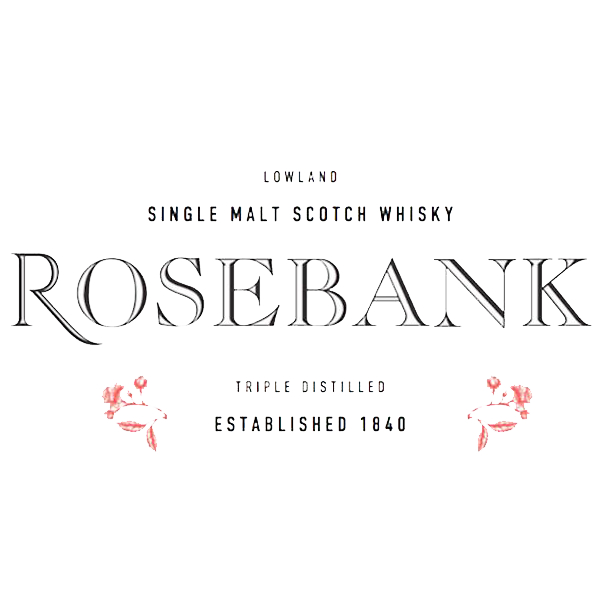
"The finest example of a Lowland malt...a grievous loss" - Michael Jackson's Malt Whisky Companion
Built by James Rankine on the banks of the Forth-Clyde canal between Glasgow and Edinburgh in 1840 (although distilling is said to have been carried out on the site since the late 18th century), Rosebank became a limited company in 1894 and in 1914 was one of the founding members of the Scottish Malt Distillers Ltd (later to be taken over by DCL in 1929).
Silent from 1862-64, Rosebank was extensively rebuilt and refurbished in 1864-65 when it took over the maltings and other outbuildings of an older distillery, Camelon, that were situated across the road. Apart from a brief hiatus in 1917-1919 it produced steadily until its closure in 1993.
In the traditional Lowland style, Rosebank was triple-distilled, and its smooth floral whisky was much in demand. However, as the roads took over as the preferred method of transport, Rosebank's canalside location changed from being a big advantage to a severe problem due to the complex being on either side of the road. This was a major hindrance to deliveries and collections as the volume of traffic on the road increased.
Rosebank's closure in 1993 was a tactical move by United Distillers (which had swallowed DCL in 1986). Glenkinchie had been chosen in 1987 as the Lowlands representative in UD's new Classic Malts range, despite being a far lesser light in the Lowland firmament than Rosebank. The most obvious reasons for this decision were:
(a) The output of Glenkinchie at capacity was four or five times that of Rosebank; and
(b) Glenkinchie's pretty distillery was situated in picturesque Peastonbank, East Lothianin 87 acres of farmland still owned by the distillery, and was an ideal location for a visitor centre.
These factors compared very favourably with Rosebank's low production capacity, uneconomical triple distillation, awkward access and murky industrial surroundings by the Forth & Clyde canal.
With resources being focused on promoting the Classic Malts, Rosebank, despite the quality of its spirit, was deemed to be redundant and the plug was pulled in 1993. Until recently, the last official bottlings were a handful of aged Rare Malts bottlings - the quality of which totally blew the myth that Rosebank had to be consumed young - and a few larger-scale bottlings under the Flora and Fauna label, the last of which was discontinued in 2006.
The closure of Rosebank rankled with whisky lovers and writers such as Michael Jackson and Jim Murray clamoured for its revival, but unfortunately the distillery site was sold to the British Waterways Board in 2002. The No. 6 warehouse is now a restaurant and planning permission has been given for the rest of the site to be converted for commercial use.
Young Rosebanks tend to be floral and aromatic; older expressions can be more robust and spicy, but with glorious depth. Stocks of the last Flora and Fauna batch (awarded 95 points in Jim Murray's Whisky Bible 2007) are still available, along with several independent bottlings, but prices for what is generally acknowledged as the best Lowland malt will continue to rise as the supply of maturing casks runs out.
Rosebank